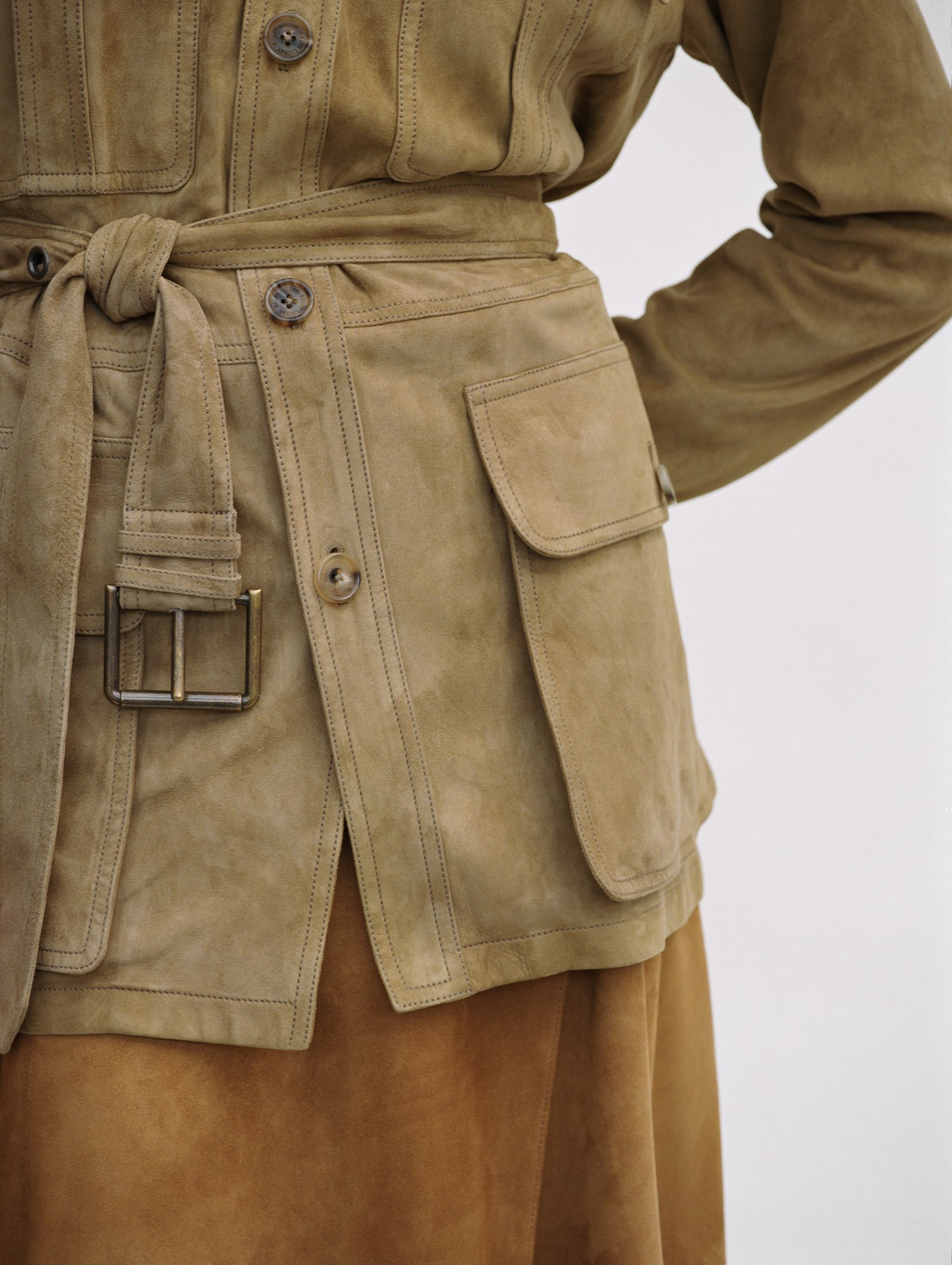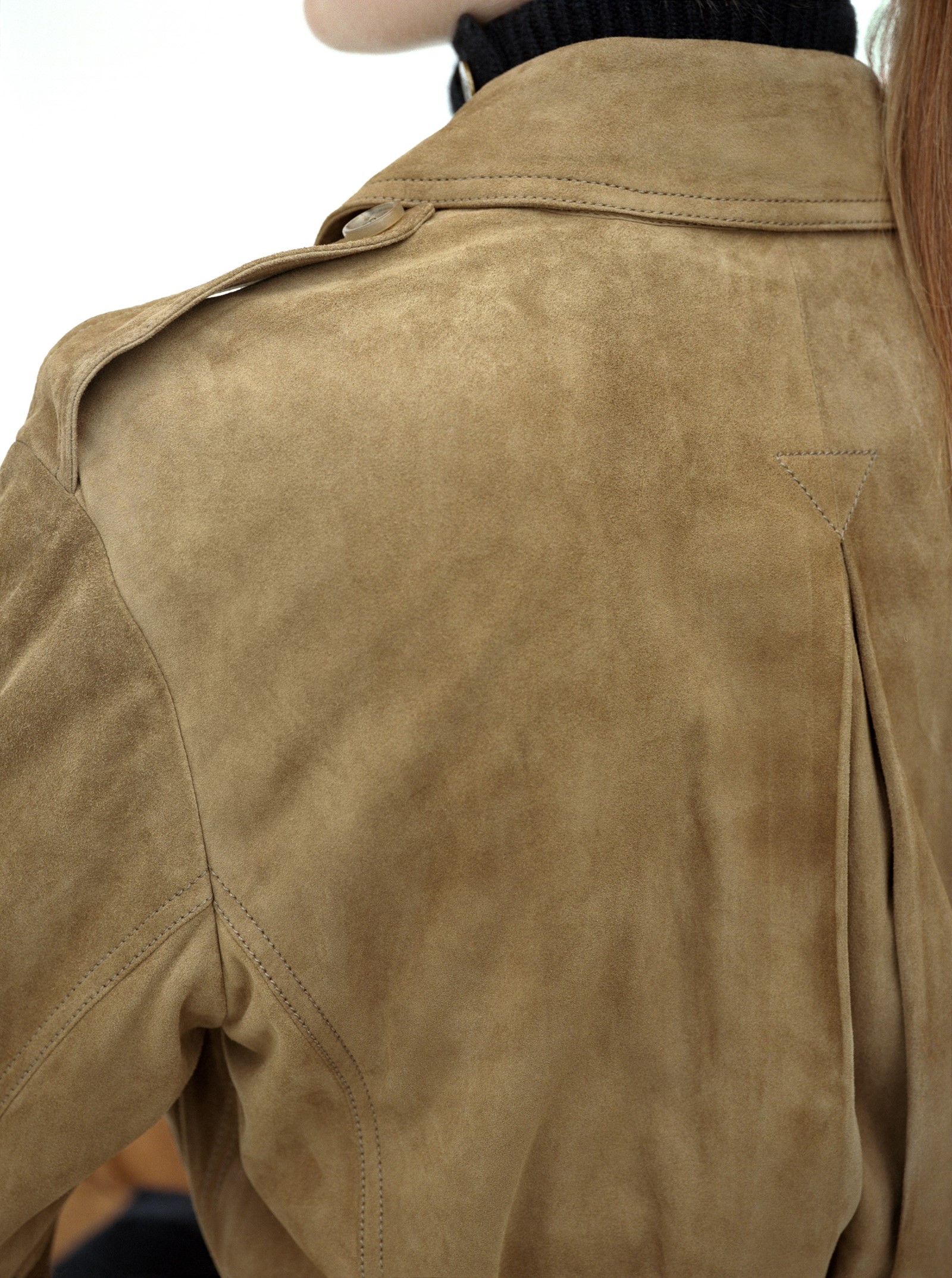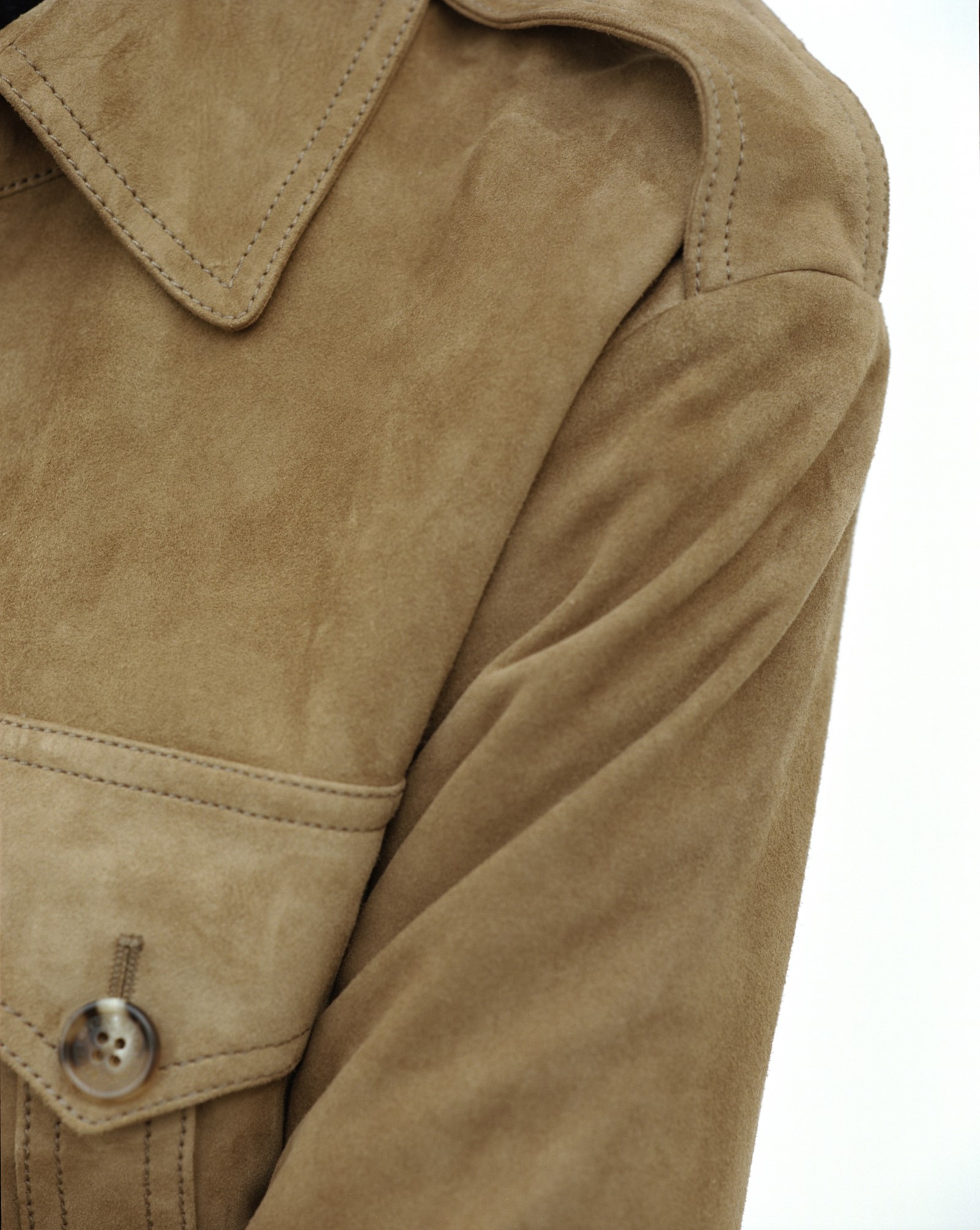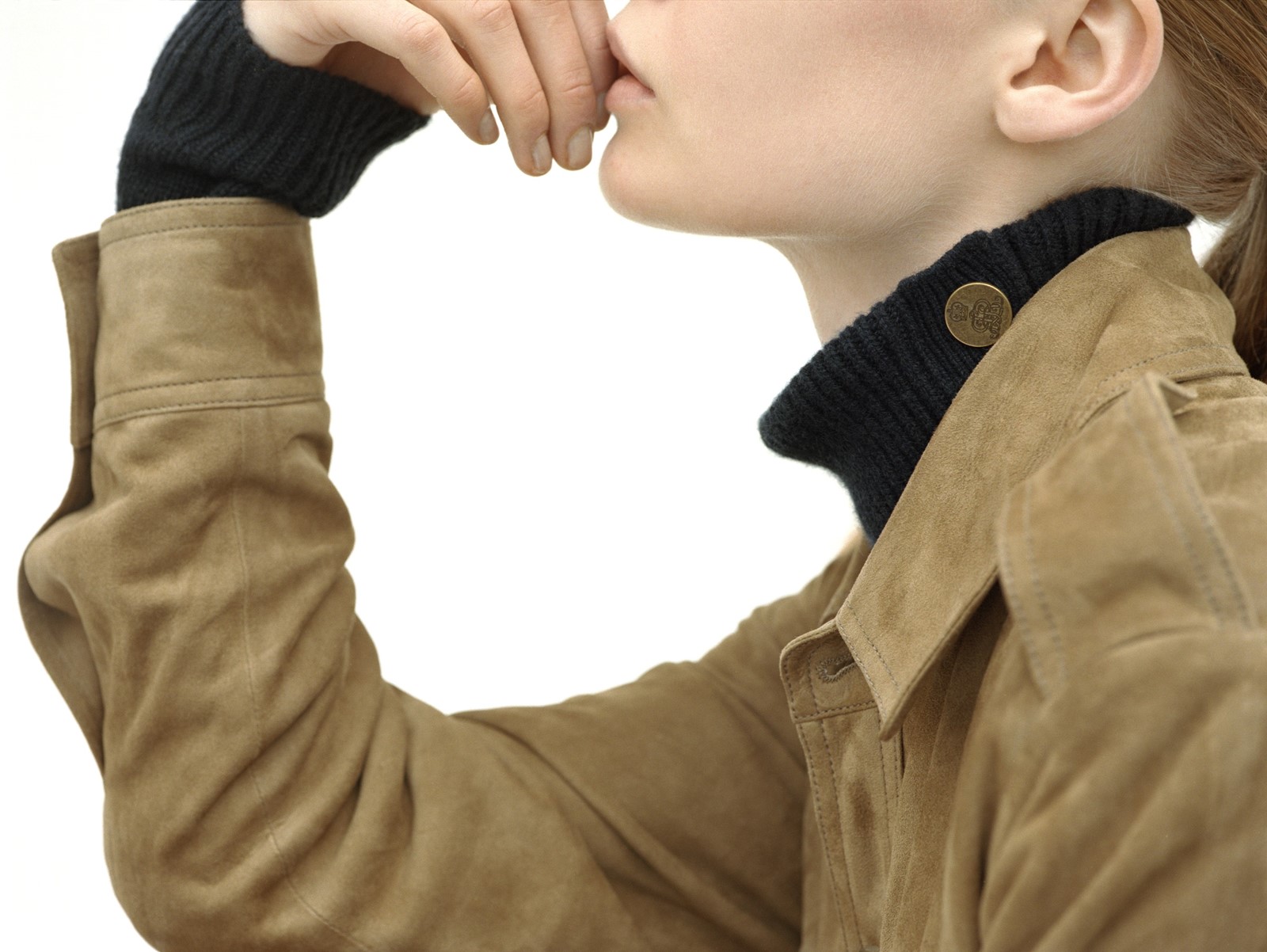“It was an adventure, a world of refinement in a place that is rugged and rustic. It had the elements of elegance mixed with utility, set against the landscape of nature and animals. It was the contrast of sturdy khakis, jodhpurs and camp shirts against the elegance of pearls and romantic lace blouses and cream linen suits worn with dusty leather riding boots. It was a rough wooden table dressed in linen and candlelight under the roof of a weathered canvas tent,” says the inimitable Ralph Lauren in his namesake book celebrating his life and work, published by Rizzoli in 2007. Lauren is, of course, talking about the inspiration behind the Ralph Lauren world of safari, which is tailor-made for journeying through faraway lands.
Such a vision is particularly evident in The Safari Jacket, a piece crafted from supple tanned suede and finished with epaulettes and heavy topstitching, and a luxurious modern iteration of a classic design. But the origins of this jacket are far more humble than they appear now: it evolved from strictly functional requirements, the style first popularised by explorers during the early 19th century. Multi-pocketed jackets and vests were worn during expeditions to Africa by the likes of Richard Francis Burton (the famous adventurer responsible for bringing the Swahili word safari, meaning journey, into the English language) and, of course, Ernest Hemingway during his ventures into the Green Hills of Africa. Such garments were often tinted in muted colours of beiges, browns and khakis, allowing the wearer to become camouflaged against the sandy grasses of the Serengeti.


Within the roomy four front pockets of their safari jackets, such globetrotters would stash an assortment of belongings: binoculars, notepads, writing tools, first aid kits, maps, souvenirs, and any other appurtenances that they had stockpiled in preparation for their excursions. Subsequently, they transformed themselves into walking, talking pieces of luggage while simultaneously appearing streamlined (and undeniably chic). A combination of sartorial prowess and functionality ensured that the jacket slowly trickled into mainstream dress during the 1960s through the safari suit, which was surely given a boost in fashionable status by the fabulous Virginia McKenna, tending to the lioness Elsa in the 1966 on-safari biopic Born Free.
“I aspire to create a sense of timelessness, a kind of foreverness, a style that is enduring” Ralph Lauren

The likes of McKenna – and later, such icons as Lauren Hutton and Meryl Streep – helped to propel the safari jacket as a garment that disregarded the boundaries of menswear and womenswear. To this day, it hangs in the wardrobes of both, exemplifying so much of what the empowered Ralph Lauren woman represents; boardroom ties worn with waistcoats, oversized suiting and lace-up mannish shoes aplenty. Ending this investigation as we began, we’ll quote Ralph Lauren once more: “I aspire to create a sense of timelessness, a kind of foreverness, a style that is enduring.” And undoubtedly, his goals have been achieved, for the safari jacket is a universally alluring item of modern day dress which, despite possessing an inherent desire for travel, won’t be wandering off our sartorial maps any time soon.
Ralph Lauren Curated Collection of Timeless Design is available now.
Model Sofie Theobald at The Hive; Hair Sophie Anderson; Photography assistant Dan Clarke; Production Beth Mingay
